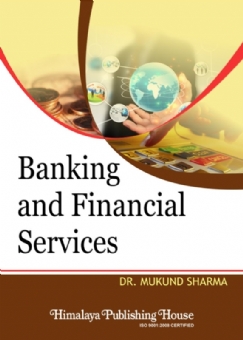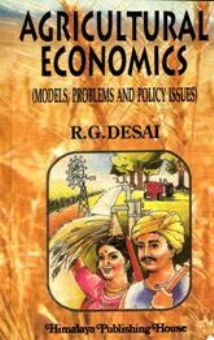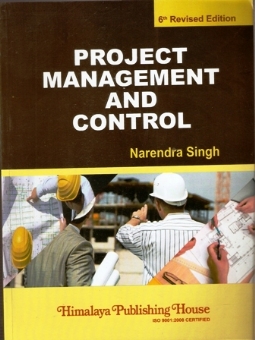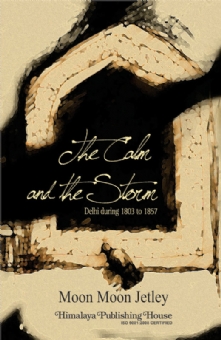Supply chains are the integrated and co-ordinated flows of goods from source to destination, as well as the information and money flows associated with it.
Supply chain management aims at maximising the value contribution to the customer while simultaneously optimising infrastructural and operational costs of the supply chains.
Logistics and supply chain management are closely related concepts which have been integrated and developed as a proven business strategy to meet the increasing demands for quality, delivery and speed.
Supply chain management consists of firms collaborating to leverage strategic positioning and to improve operating efficiency. In contrast, logistics is the activity required to move and position inventory throughout a supply chain. As such, logistics is a subset of supply chain management and occurs within the broader framework of a supply chain.
Logistics and supply chain management are necessary cornerstones of competitive strategy, increased market share and shareholder value for most organisations in the 21st century. Managing supply chains beyond company boundaries is increasingly generating competitive advantage in many industries. Co-ordinating the production systems of suppliers and customers is the key to meeting today’s evolving customer demands-demands which focus not just on product quality but also on speed, delivery reliability and service level.
This book is written as comprehensively as possible and organised into 21 chapters dealing with major aspects of logistics management as well as supply chain management. Students who are planning to pursue a career in business will benefit form a clear understanding of the field of logistics and supply chain management because the present era is the era of “supply chain competition”.
The salient features of this book are :
– Learning objectives at the beginning of each chapter which provide students with an overall perspective of the chapter material.
– Exhibits and box illustrations which add value to the reading material presented.
– Snapshots of logistics and supply chain management at annexure I.
– Short cases at annexures II which expose students to practical real life situations.
– Review questions at the end of each chapter which allow students to recollect what the
Contents –
- INTRODUCTION TO LOGISTICS AND SUPPLY CHAIN MANAGEMENT
What is a supply chain? What is supply chain management (SCM)? Importance of supply chain management, Overview of supply chain management, Decision phases in a supply chain, Process view of a supply chain, Nature and scope of supply chain management, Managing the supply chain, A model of supply chain management, What is logistics?, What is logistics management?, Logistical competency, Competitiveness and competitive advantage, Gaining competitive advantage through logistics, Integrated supply chains, Supply chain and competitive performance, Evolution of logistics toward supply chain management, Logistical activities, Objectives of logistics management, Role of logistics in (a) supply chain management, (b) the economy and (c) the organisation, Logistics costs, Total cost concept, Evolution of supply chain management, Importance of logistics/supply chain management, Focus areas in supply chain management, A framework for structuring supply chain drivers, Change drivers, Review questions.
- DEMAND MANAGEMENT AND CUSTOMER SERVICE
What is demand management?, Relationship between customer service and demand management, the logistics/marketing interface, Dimensions or elements of customer service, Performance measures for customer service, Demand management process, Demand forecasting and its role in a supply chain, Forecasting methods/techniques, Focus forecasting, Collaborative Planning, Forecasting and Replenishment (CPFR), Customer service strategy, The customer service audit, Review questions.
- CUSTOMER SERVICE DIMENSION
The marketing and logistics interface, Customer service as a competitive weapon, Customer service and customer retention, Logistical customer service, Elements of customer service, Importance of logistics/supply chain customer service, Customer retention, Service-driven logistics systems, Basic service capability, Value-added services, Customer satisfaction and success, Time-based logistics, Review questions.
- LOGISTICS PLANNING AND STRATEGY
The hierarchy of planning, Relationship between logistics strategy and corporate strategy, The organisation planning process, The strategic logistics plan, Logistics audit, Developing logistics strategy, Logistics planning, Logistics mission and objectives, The changing logistics environment, Logistics strategies, Formulating logistical strategy, Designing the logistical system, Review questions.
- LOGISTICS SYSTEM DESIGN AND ADMINISTRATION
Logistics system design, Approaches to analysis of logistics system, Systems approach to logistics, Techniques of logistics system analysis, Logistics positioning, Logistics re-engineering, Logistics environment assessment, Time-based logistics, Alternative logistics strategies, Strategic integration, Logistics time-based control techniques, Logistics administration, Review questions.
- INTEGRATED LOGISTICS ACTIVITIES
Logistics network design, Information flow for logistics, Managing material flow and transportation, Inventory management, Warehousing, Materials handling and Packaging, Review questions.
- MEASURING LOGISTICS COSTS AND PERFORMANCE
Logistics costs, Total cost concept, Total cost analysis and its concept, Principles of logistics costing, Logistics and the bottom line, Impact of logistics on shareholder value, Customer profitability analysis, Customer profitability matrix, Direct product profitability, Cost drivers and activity-based costing, Costing methods, Activity-based management, Logistics pricing, Logistics performance measurement, Internal versus external performance measurement, Performance reporting, Review questions.
- STRATEGIC INTEGRATED LOGISTICS MANAGEMENT
Systems approach, Integrated logistics, The integrated logistics model, Planning and co-ordination flows, Information systems in integrated logistics, Strategic integrated logistics management, Integrated logistics strategy for competitive advantage, Strategic logistics planning, The strategic logistics plan, Developing strategic logistics plan, The strategic integrated logistics management model, Integrated logistics quality, Review questions.
- BENCHMARKING THE SUPPLY CHAIN
What is benchmarking? and What is a benchmark?, Benchmarking the logistics process, Mapping the supply chain process, Supplier and distributor benchmarking, Setting priorities for benchmarking, Identifying logistics performance indicators, Role of critical success factors in benchmarking, Review questions.
- DESIGNING THE SUPPLY CHAIN NETWORK
Supply chain networks, Logistics / supply chain network design, Integrated supply chain planning, The strategic importance of logistics / supply chain network design, Logistics/supply chain network design process, Logistics / supply chain network planning, Role of facility decisions in a supply chain, Factors influencing network design decisions, Major locational determinants, A framework for network design decisions, Design of channel of distribution, The functions performed by distribution channels, Types of distribution channels, Channel design, Considerations of channel design, Physical distribution management, Tasks in physical distribution management, Economic of distribution, Channel relationships, Logistics service alliances, Alliances, Modelling approaches to logistics / supply chain network design, Strategic planning of logistics / supply chain network, Review questions.
- SUPPLY CHAIN PLANNING AND IMPLEMENTATION
Aggregate planning in a supply chain, Aggregate planning strategies, Planning supply and demand in a supply chain, Planning and managing inventories in a supply chain, Planning for optimal level of product availability, Sourcing/source management, Strategic sourcing management/Transportation management, Review questions.
- ORDER PROCESSING AND INFORMATION SYSTEMS
The customer order cycle, Order management system, Order and replenishment cycles, Order processing categories, The logistics information system, The order management system, The warehouse management system, The transportation management system, Review questions.
- SUPPLY CHAIN PLANNING AND STRATEGIES
Supply chain strategies, Strategy classification, Corporate strategy, Logistics strategies, Strategic fit, Achieving strategic fit, Supply chain strategies, Supply chain strategy framework, Supply chain relationships, Customer relationship management, Supply chain integration, Push, Pull and Push-Pull systems, Demand-driven strategies, Distribution strategies, Centralised control strategy versus decentralised control strategy, Review questions.
- ORGANISATION AND CONTROL IN A SUPPLY CHAIN
Need for logistics / supply chain organisational structure, Importance of logistics / supply chain organisation, Organisational development, Organisational structures in integrated logistics, Organisational design, Organisational choice and Organisational scope, Alliances and partnerships, Logistics/supply chain control, The logistics/supply chain control model, Control information, Measurement and Interpretation, Review questions.
- PURCHASING AND SUPPLY CHAIN DECISIONS
Role of procurement or purchasing in a supply chain, Supply scheduling, Sourcing versus purchasing, Sourcing decisions in supply chain management, Insourcing and outsourcing, Key sourcing-related processes, Sourcing strategies, Strategic sourcing, Strategic sourcing management, Procurement, Objectives of procurement or purchasing, Procurement / purchasing process, Strategic role of purchasing, Managing supplier relationships, Supplier / vendor selection criteria, The special consideration-procurement price, Buyer-seller relationships, Collaborative buyer-seller relationships, Strategic alliance, Supply scheduling, Procurement strategies, Review questions.
- CO-ORDINATION AND INFORMATION TECHNOLOGY IN A SUPPLY CHAIN
Co-ordination in the supply chain, Bull-whip effect, The impact of lack of co-ordination on supply chain, Managerial obstacles to co-ordination within a supply chain, Building strategic partnership and trust within a supply chain, Internal supply chain management, Managing supplier relationships, Information technology in a supply chain, Drivers of new supply chain systems and applications, Information for strategic supply chain management, Logistics / supply chain information technologies, computer based information systems, Logistics information systems, New information technologies, Enterprise resource planning systems, Designing the information system for logistics and supply chain management, Review questions.
- GLOBAL LOGISTICS AND SUPPLY CHAIN MANAGEMENT
Globalisation of business, Global business strategy, The concept of global logistics and global supply chains, Global supply chain management versus domestic supply chain management, Overview of global logistics and supply chain management, Managing global logistics, Components of global logistics management, The impact of global logistics, The global logistics management process, Guidelines for developing a global logistics strategy, Environmental analysis, Global distribution, Global distribution channel strategies, Global logistics strategies, The global supply chain strategy, Global sourcing, Global purchasing, Global sourcing, purchasing and supplier relations, Outsourced manufacturing, Global manufacturing strategies in the internationalisation process, Review questions.
- SUPPLY CHAIN PERFORMANCE MEASUREMENT
Performance measure defined, Dimensions of performance measures, Overview of performance measurement, Performance measurement in supply chain management, Performance categories, Logistics quantification pyramid, Purchasing / materials management performances, Supply chain performance measures, Developing a performance measurement and evaluation system, Supply chain metrics, Supply Chain Operations Reference (SCOR) model, Balanced score-card approach, Review questions.
- SUPPLY CHAIN PERFORMANCE
Relevance of finance in the supply chain, Financial impact of the supply chain, Financial statements used, Financial impact of supply chain decisions, Financial implications of supply chain services, Review questions.
- CURRENT ISSUES IN SUPPLY CHAIN MANAGEMENT
Benchmarking the supply chain, Reengineering the supply chain, Virtual supply chain, Continuous replenishment supply chains, Lean supply chains, Agile supply chains, Green supply chain, Flexible supply chain, Worldclass supply chain management, Review questions.
- SUPPLY CHAIN CHALLENGES FOR THE FUTURE
Strategic planning for logistics and supply chain management, Time-based strategies, Time reduction logistics initiations, Asset-productivity strategies, Technology based strategies, Relationship based strategies, Future direction for supply chains, New business models for new supply chains, The imperative of new operating model for next generation supply chains, Living supply chains, Managing inherent complexity in supply chains, Review questions.
Annexure I : Snapshots of Logistics and Supply Chain Management
Annexure II : Case Studies
Reference







